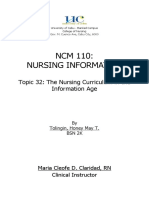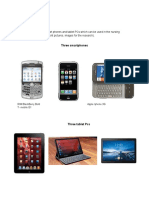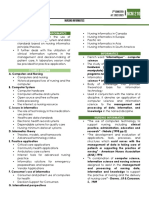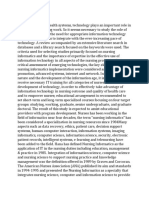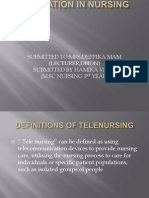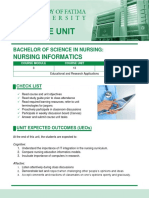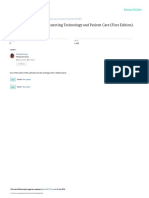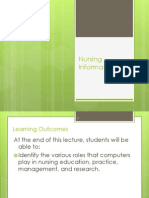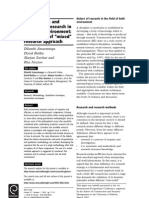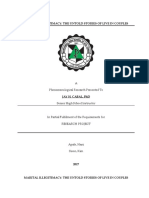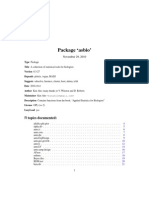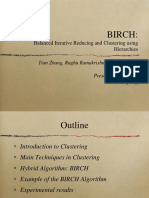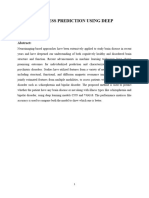0% found this document useful (0 votes)
7 views9 pagesNote On Relevance of Data
The document discusses the evolution and significance of nursing informatics, highlighting the role of technology in enhancing client care, education, and management within nursing. It covers various systems such as Management Information Systems (MIS) and Hospital Information Systems (HIS), as well as the impact of computer-assisted instruction, distance learning, and electronic health records on nursing practice. Additionally, it addresses the challenges and benefits of technology in nursing, including data management, client monitoring, and telemedicine.
Uploaded by
bqvqyz7wzfCopyright
© © All Rights Reserved
We take content rights seriously. If you suspect this is your content, claim it here.
Available Formats
Download as DOCX, PDF, TXT or read online on Scribd
0% found this document useful (0 votes)
7 views9 pagesNote On Relevance of Data
The document discusses the evolution and significance of nursing informatics, highlighting the role of technology in enhancing client care, education, and management within nursing. It covers various systems such as Management Information Systems (MIS) and Hospital Information Systems (HIS), as well as the impact of computer-assisted instruction, distance learning, and electronic health records on nursing practice. Additionally, it addresses the challenges and benefits of technology in nursing, including data management, client monitoring, and telemedicine.
Uploaded by
bqvqyz7wzfCopyright
© © All Rights Reserved
We take content rights seriously. If you suspect this is your content, claim it here.
Available Formats
Download as DOCX, PDF, TXT or read online on Scribd
/ 9

